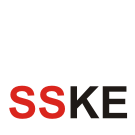From SSKE
Abstract
This paper presents a first attempt at an integrated Service Science (SS) and Viable Systems Approach
(VSA) analysis of the real-world phenomenon of changing jobs roles. Changing job roles is important
to quality of life and yet understudied by systems scientists. Today, individuals changing jobs multiple
times during their working life is the norm. The average person born in the later years of the US baby boom
held 10.8 jobs from age 18 to age 42 (BLS 2008). The viability of societal systems depends on both entities
changing job roles offered and individuals changing job roles filled (Spohrer and Maglio, 2010b). Societal
systems interact with their environment via individuals in job roles, and the behaviors and dynamics of
these diverse types of viable systems are not easy to explain and predict (Beer, 1972).
Both Service Science (SS) and Viable Systems Approach (VSA) can be seen as less well known
specializations of General Systems Theory (von Bertalanffy, 1968, Spohrer and Kwan, 2009, Barile 2009,
Golinelli, 2010). Like General Systems Theory, these emerging analytic frameworks advocate a worldview
and specialized vocabulary that provide a framework for analysis and decision making. Also, these nascent
analytic frameworks aim to improve our understanding of complex systems and improve their design.
By refining the concept of the identity of a system from SS and VSA perspectives, the contributions of
this paper include providing an abstract framework for enumerating all job roles and transitions between
job roles as well as a practical recommendation to prepare a next-generation of individuals to compete
better in a world of accelerating job role change. Specifically, our analysis of changing job roles will result
in a recommendation for increasing the ratio of T-Shaped Professionals (T-SP possess both broad
communication skills and deep problem solving skills) to I-Shaped Professional (I-SP possess only deep
problem solving skills) in the labor force of nations and businesses to improve their viability in a complex
environment of accelerating change (Donofrio et al., 2010).



